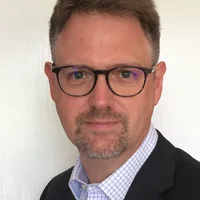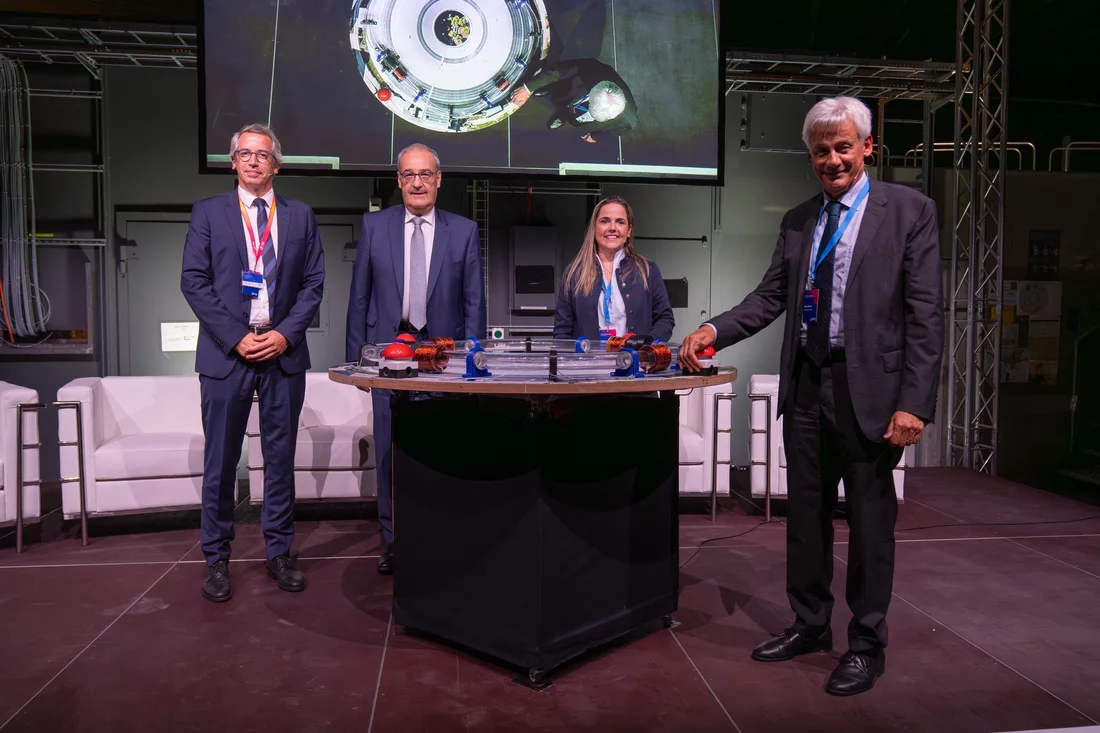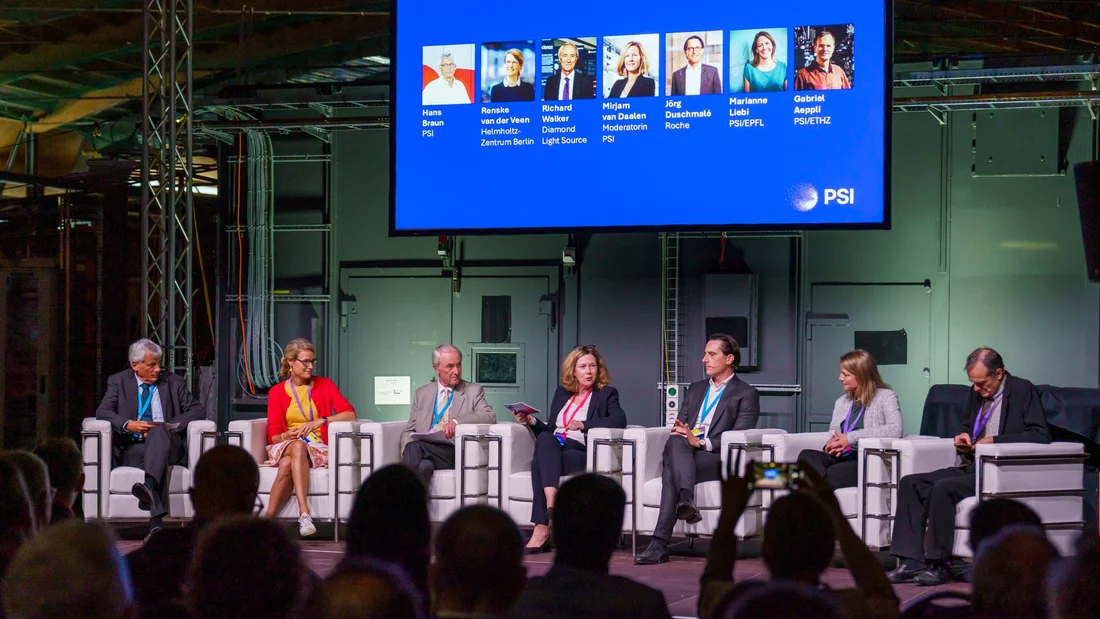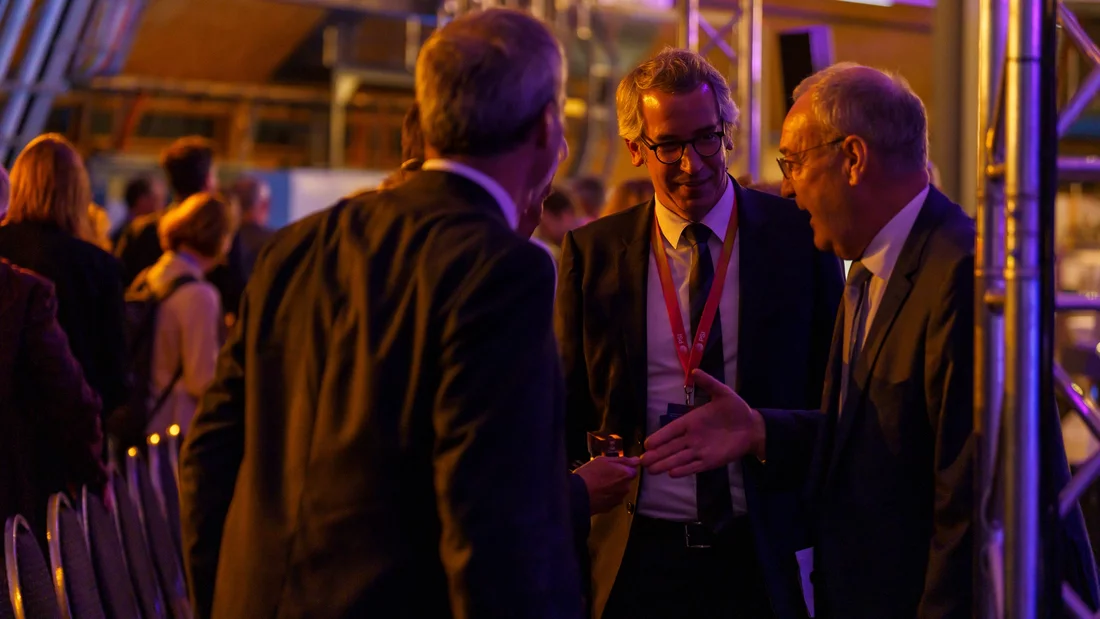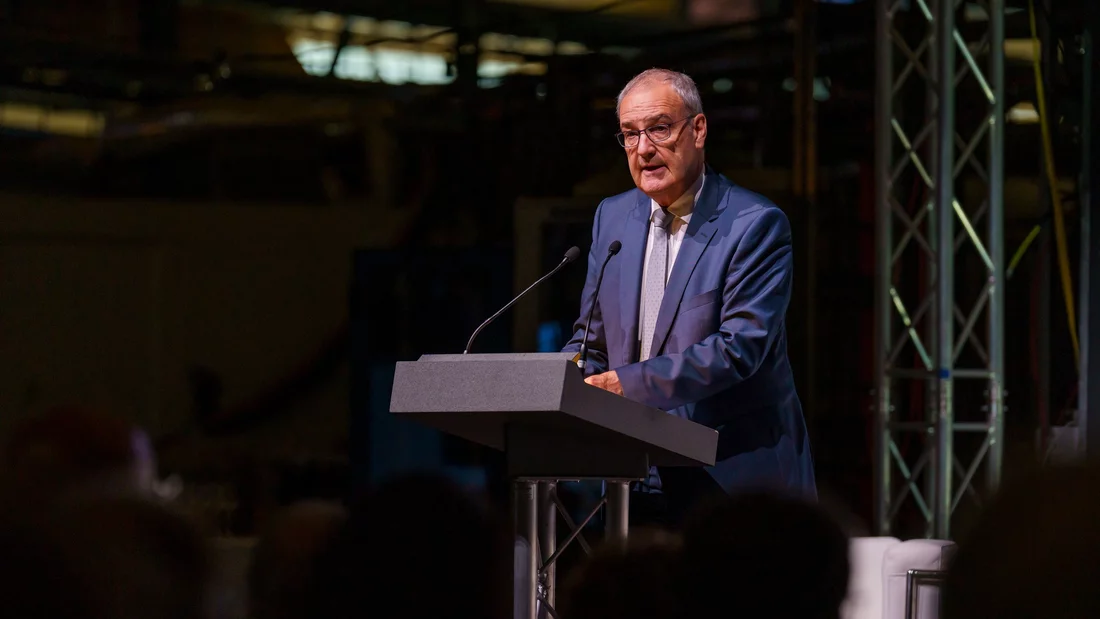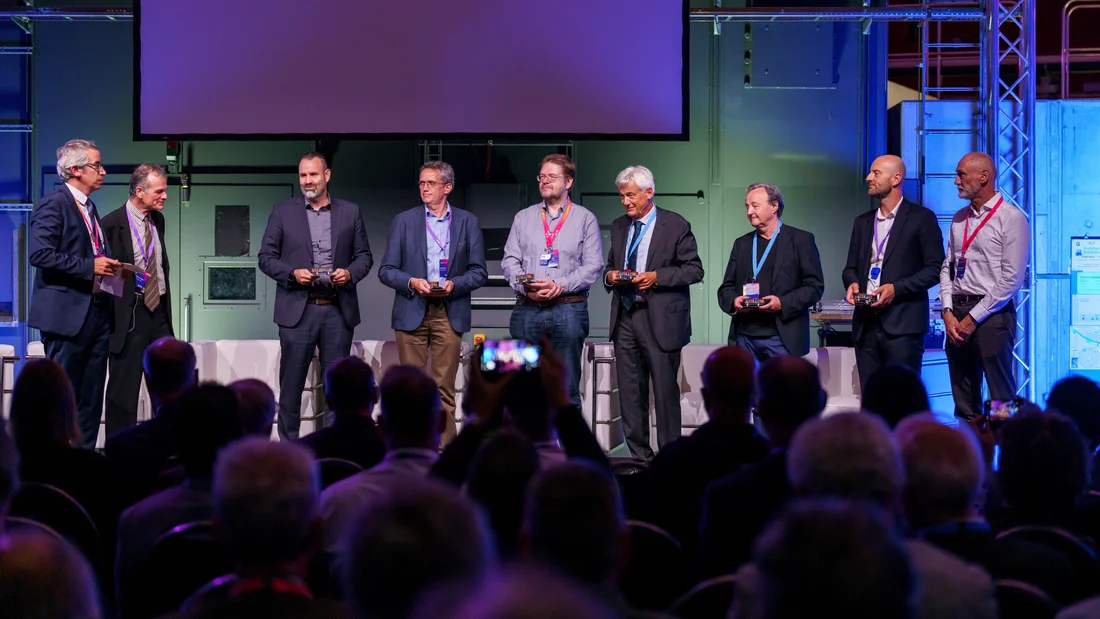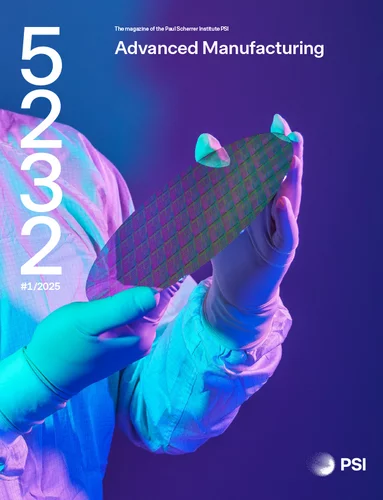A bright light for Switzerland: The new Swiss Light Source is inaugurated
The Swiss Light Source SLS upgrade at the Paul Scherrer Institute PSI will accelerate the path from scientific discovery to practical applications – ones that span healthcare, climate, energy, and future technologies. Present at its inauguration on the 21 August 2025 is Federal Councillor, Guy Parmelin.
Today, on the 21 August 2025, the Paul Scherrer Institute PSI inaugurated its newly upgraded Swiss Light Source SLS. Around 150 guests from politics, business and science were present to celebrate the achievement, including Federal Councillor Guy Parmelin and Martina Bircher, member of the cantonal government and Head of the Department of Education, Culture and Sport of the Canton of Aargau.
The new SLS is one of the most ambitious science infrastructure projects in Switzerland – one that will enable experiments that were previously unthinkable. “The SLS was at its inception and is now after its comprehensive upgrade a national infrastructure built for the common good,” said PSI Director Christian Rüegg. “It is a tool for Swiss researchers and industry, and for our international guests to answer questions that matter for the future of people and the planet.”
The SLS is Switzerland’s national synchrotron light source – a huge X-ray microscope shaped like a doughnut. Scientists from all of Switzerland and around the world travel to the SLS to use the light, billions of times brighter than that of a hospital X-ray, to peer deep into proteins, cells and tissues, materials, and molecules with atomic resolution.
At the inauguration event, Christian Rüegg reflected on the visionary construction of the SLS in 2001 – at the time, one of the first national synchrotrons in the world. Now, it is the first national facility in the world to upgrade to the next generation of technology. With light many times more intense than before, it will accelerate the path from scientific discovery to practical applications – ones that span healthcare, climate, energy, and future technologies.
Guy Parmelin described the new SLS as a significant milestone for Switzerland as a centre for research and innovation. He pointed out that the SLS embodies the qualities that define Switzerland: long-term vision, perseverance and innovative strength. The upgrade reinforces the nation’s reputation as a global hub for cutting-edge science and technology and sends a strong and positive signal that Switzerland invests in its future.
A 288m ring built to the precision of a Swiss watch
An amazing feat of engineering, saving many tens of millions of francs, was to install the new machine within the old building. Central to this is the new storage ring in which electrons whizz round at close to the speed of light, producing X-rays. This ring – with all its custom-made components from magnet systems to vacuum chambers – was painstakingly designed to fit perfectly within the existing building.
“We built a ring with a 288m circumference to the precision of a Swiss watch – and completed it on schedule like a Swiss train,” said SLS 2.0 project leader Hans Braun. “The upgrade is a masterpiece of science, engineering and planning.”
The light that it produces may be much more intense, but the upgrade also uses 33% less electricity than before. Such savings stem from state-of the-art engineering choices that make the operation more efficient, plus a new solar panelled roof.
Hans Braun added: “We set our sights high. Our goal was to create a new machine that pushes the boundaries of technology – and we achieved it.”
A cutting-edge machine for Switzerland
The audience were tempted with some of the scientific offerings that the new machine will bring in a panel discussion entitled ‘Illuminating the Future of Science and Innovation’. Participating were leading voices in science and industry from Switzerland, the UK and Germany.
Thanks to the upgrade, SLS experiments benefit from light up to 1000 times more intense than before. For some experiments, this will mean that samples that once took days can be imaged in minutes. For others, it will mean accessing tiny details of nature or materials never seen before. In other cases, entirely new research will be possible.
Diverse applications will benefit. Some of the examples discussed include imaging brain tissue at high resolution in 3D – an important development for understanding neurodegenerative diseases such as Alzheimer’s. Imaging computer chips at the nanoscale is driving innovation in the semiconductor industry and is important for national security. Applications that improve the performance of catalysts were also discussed. Of particular importance to Jörg Duschmalé, board member from Roche, was that the SLS upgrade will allow some of the most interesting protein structures to finally be studied and new molecules for medical treatments to be developed.
The celebration of an enormous engineering effort
For those behind the upgrade, the inauguration was a moving occasion: in September 2023, the light was switched off at SLS for just over one year so that the electron storage ring could be dismantled and entirely replaced. Over 4000 tonnes of concrete were removed – and later put back in place. To form the new ring, PSI engineers installed 500 copper vacuum chambers and 1000 high-precision magnet systems – designed and tested on-site, together with countless pipes and tubes, cooling systems, vacuum pumps, and a total of around 500 kilometres of cables.
PSI Director Christian Rüegg emphasised that many of the key components were jointly developed and precision manufactured by Swiss industry. “High-tech projects such as the SLS upgrade have an enormous potential to enable and drive innovation at all levels from the fundamentals of nature to the most advanced technologies in industry,” he added.
During its 24 years of operation, some 22,500 experiments were performed at the SLS by scientists from around the world. These advanced scientific understanding in many fields, including chemistry, medicine, and structural biology – where over 10,000 protein structures were solved – and contributed to several Nobel prizes.
With the upgrade, SLS joins only four other light sources in the world using the next generation of synchrotron technology. Now the Swiss Light Source SLS looks forward to welcoming back the scientists who will use its light to begin a new chapter of research.
Contact
About PSI
The Paul Scherrer Institute PSI develops, builds and operates large, complex research facilities and makes them available to the national and international research community. The institute's own key research priorities are in the fields of future technologies, energy and climate, health innovation and fundamentals of nature. PSI is committed to the training of future generations. Therefore about one quarter of our staff are post-docs, post-graduates or apprentices. Altogether PSI employs 2300 people, thus being the largest research institute in Switzerland. The annual budget amounts to approximately CHF 450 million. PSI is part of the ETH Domain, with the other members being the two Swiss Federal Institutes of Technology, ETH Zurich and EPFL Lausanne, as well as Eawag (Swiss Federal Institute of Aquatic Science and Technology), Empa (Swiss Federal Laboratories for Materials Science and Technology) and WSL (Swiss Federal Institute for Forest, Snow and Landscape Research). (Last updated in June 2025)
